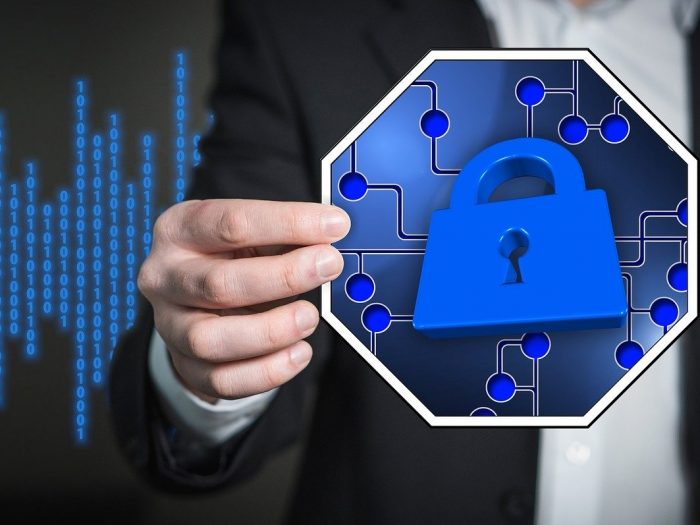Data Loss Protection (DLP) practices are paramount to the success of any business, especially those in the technology sector. Data breaches can cause financial and reputational disasters, and if not handled well, can even result in bankruptcy. Continuous monitoring and security of all compiled data are one of the top priorities for any flourishing company.
What is DLP?
DLP strategies are procedures and mechanisms to help keep data under surveillance and securely stored. They help prevent breaches, protect privacy, and comply with the legal issues surrounding information storage. The top tasks for DLP are:
- Controlling data activity and managing who may access it at any time.
- Keep information within the closed system.
- Protect yourself from ransomware.
- Keep Personally Identifiable Information (PII) and intellectual property safe.
- Regulate your network and comply with legislation.
- Ensure visibility of data.
- Shield from cellphones, IoT devices, and other data endpoints.
- Keep data safe in the cloud and on personal devices.
DLP Practices and Software
Using a wide range of available technologies to protect your data is essential. Encryption software, data policies, passwords, tokenization, and identity verification are just some examples of the tools available to keep data safe at every stage of its life.
Specific DLP software can locate and protect from different threats to information security and can be adapted to fit your company’s internal regulations. This software either manages data at all three stages of its life cycle or is specific to one of the three, which are:
- Storage: Resting data. Specific storage DLP controls access to this information, specifically around cloud environments and those involving personal rather than company devices.
- Network: Moving data. Specific network DLP exists at each point of the information’s movement in the system and monitors how it flows at each access point.
- Endpoint: Data in use. Specific endpoint DLP is deployed on workstations and other devices to regulate and observe who exchanges and accesses information.
Why is DLP Necessary?
There are countless reasons that DLP is the lifeblood of any business, but the following seven reasons are currently the most in focus. It is essential to be aware of them as you go ahead.
- Losing data is the same as losing money
Data breach costs rise by over 5% each year, and in 2018 it cost companies an average of $3.86 million, or $148 per record. The estimated average cost of data breaches in the US is upwards of $7 million.
All electronic data can be manipulated and sold by cybercriminals, whether something as blatant as financial information or as simple as a record of a name. Your loss is the criminal’s financial gain.
- Losing data is the same as losing reputation.
Reports of massive security breaches rise in number each year, and the finger never points exclusively at the hacker or criminal who obtained the supposedly secure information. Equal blame and scrutiny, if not more, is given to the company that allowed such a failure in their systems that they lost the data – and the trust – customers provided to them. Almost 30% of people who have experienced a data breach will never use the same company again.
- Data loss threatens the continuity of your business.
Even the smallest mistake – deleting a file at the wrong time, losing an address before a critical deal, a security breach that breaks a client’s trust at the wrong moment – can destroy a business entirely. Information is just as if not more important than money in the business world, and its loss can result and has resulted in enterprises entirely failing.
- Insider threats are genuine and require specific defenses.
It’s hard to believe that a trusted employee could be a threat to your business, but insider breaches aren’t always deliberate. It can be something as simple as an accidental misclick or wrong download of malware that sends the company into chaos and set information into the wild.
- Be aware of vulnerable endpoints
Between the development of the cloud and the growth of device capabilities as technology progresses, it isn’t effortless to keep security software up to date with data endpoints. Newly connected devices are always a blind spot that is potentially able to be attacked and used as a route into the network.
- Watch out for information disclosure
Information disclosure is when data doesn’t have appropriate protection from those who aren’t authorized to access it. Information disclosure attacks can be internal or external and take advantage of weaknesses in particular web apps to access data.
- Make sure you are complying with the law
Here are three of the most important statutes and regulations to keep in mind:
- The General Data Protection Act (GDPR): This act protects sensitive information.
- The Health Insurance Portability and Accountability Act of 1996 (HIPAA): This act is specific to healthcare confidentiality.
- The Payment Card Industry Data Security Standard (PCI DSS): This act refers to credit card security.
Breaking these acts can cause losses in money or reputation for your company.
DLP is usable at all stages of the data lifecycle. Following best practices and using the right software is the best way to protect your employees, your business, and your clients.



